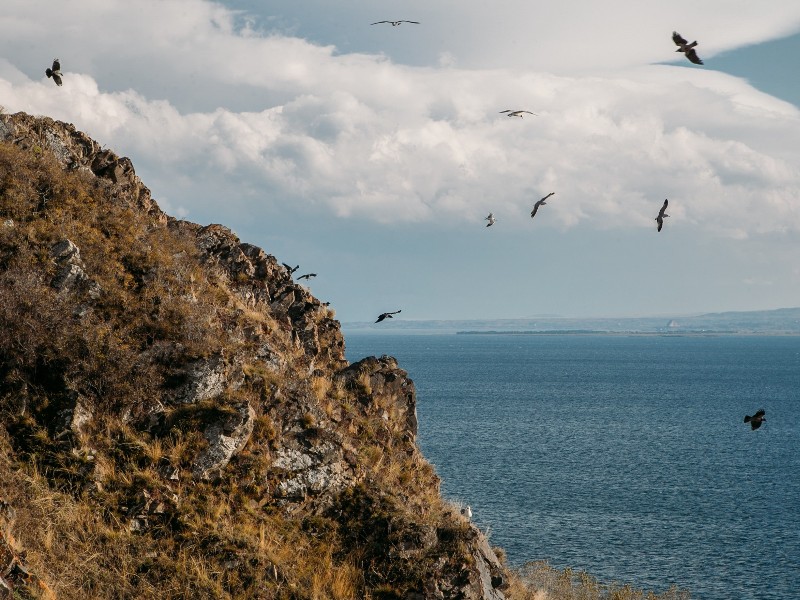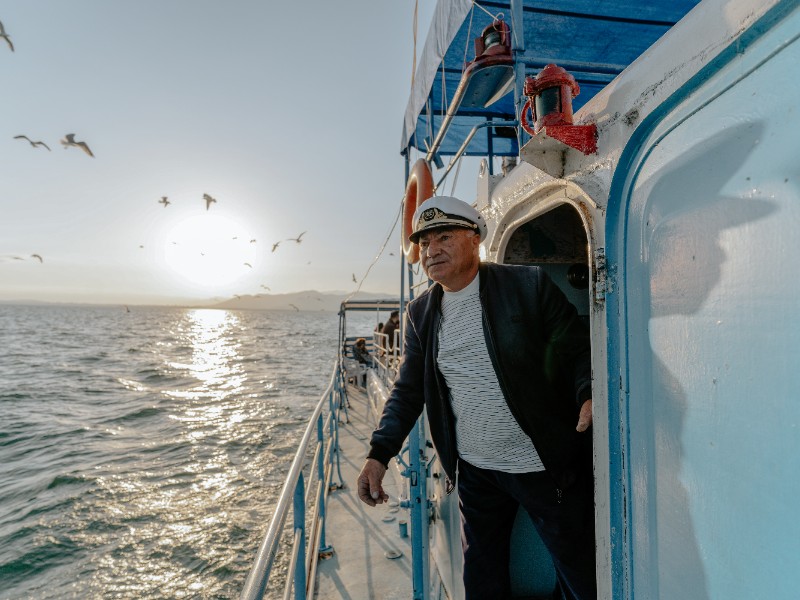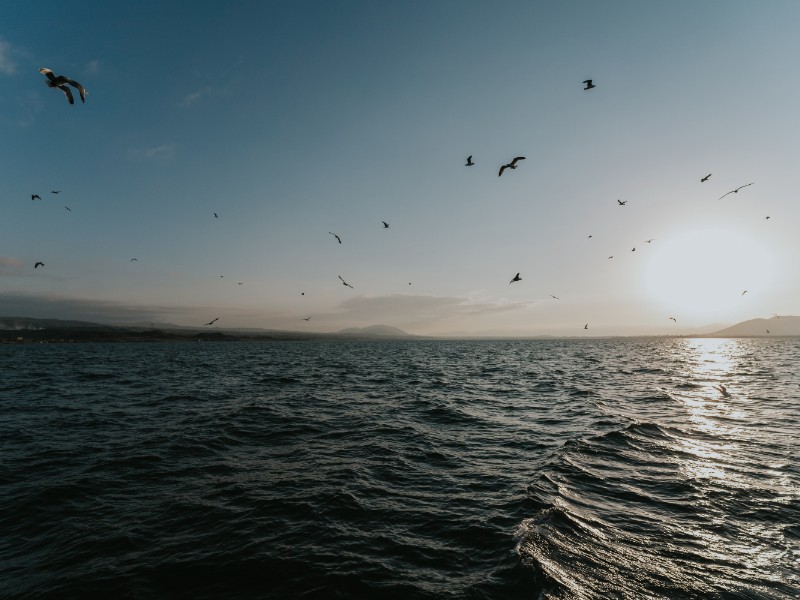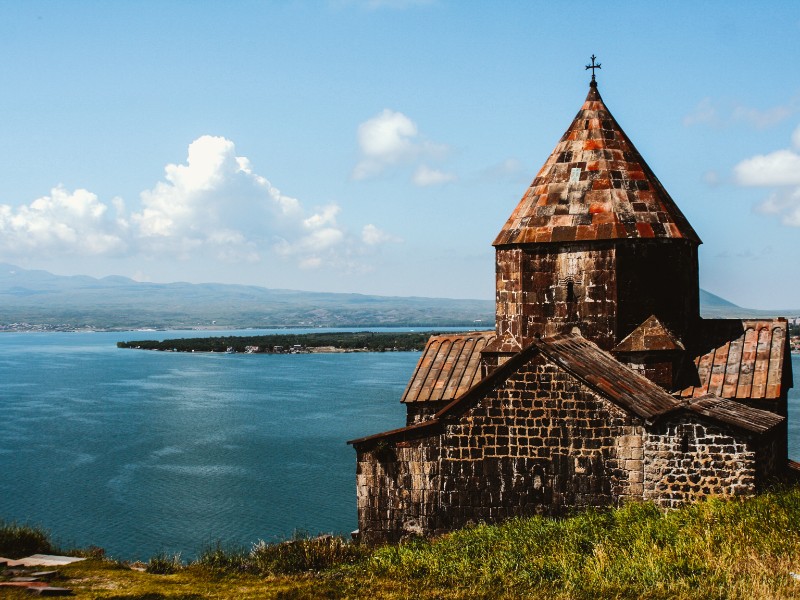Sevan
Weather and climate
Lake Sevan is the crown jewel of Armenia and also one of the largest alpine lakes in the world.
In summer, the lake becomes an ideal place for those who want to escape from the heat and enjoy the mild weather of Sevan. Here you can swim in the cool water, go boating, diving or windsurfing. And if you like a relaxing holiday, you can enjoy the beauty of nature, the sound of the surf, a light breeze and the cries of Sevan silver gulls.
The history of Sevan
Sevan is a town located close to Yerevan, near the eponymous lake. The settlement was founded in 1842 by immigrants from Russia (Christian Molokans). They named the village Yelenovka. The village had this name until January 1935, when it was renamed Sevan in honor of the lake, near which it is located.
During the Soviet Union, Sevan was a small prosperous settlement (it received the status of a town in 1961). A number of different factories were built in Sevan, but what really put the town on the map was the railway road.
For a long time the name of the lake was associated with the eponymous monastery, built from black stone: in Armenian, “sev” means black, and “vank” means monastery. This interpretation of the name of the town has been preserved for centuries, but it is completely wrong - because the name of the lake is older than the name of the monastery.
Recently, a cuneiform Odzabera was discovered near the lake, left by the king of Urartu Rusa II (730-714 BC). The cuneiform provides the name for the lake, "Suiniya" (which means water) or "Tsopnya" (sea). This cuneiform is considered the first documented mention of Lake Sevan, and it makes sense as in ancient times, people often called geographical objects by uncomplicated names, using words such as "water", "river", "lake", "mountain", "desert", etc.
Sevan today
Today Sevan is a small town with a population of 20,000 people. Despite the fact that the town is close to the lake, it is difficult to call it a tourist location. However, the surroundings of the lake are well-known landmarks of Armenia. There are many different beach areas on the east coast of Sevan.
The restaurant industry is represented by various establishments where you can taste the famous Sevan fish and other impressive and delicious dishes.
What to see in Sevan
Lake Sevan
Sevan is located among the mountains at an altitude of almost 2,000 meters above sea level. Surrounded by mountains, it is popular because of the clean air, beautiful nature, and the large number of landmarks.
The lake has natural and cultural value as well as great strategic importance. Sevan is the only fishing area of the republic, where valuable fish species are bred. Among the popular ones are trout, pike perch, hramulya, barbel, whitefish, and others.
The area around the lake is a national park, which is home to about 1,600 species of plants and trees, almost 20 species of mammals, and a large number of birds.
The lake is also an important center of the Armenian seagull population: the number of them reaches 4,000 – 5,000 pairs here.
Sevan Peninsula
Sevan consists of two unequal parts: Big Sevan and Small Sevan. These parts are connected by a 5-kilometer strait, which is located between the Artanish and Noratus peninsulas. The Sevan Peninsula is a picturesque place washed by water from three sides. From the top point of the peninsula, you can see an incredible view of the lake and the nearest land.
Sevanavank Monastery
On the top of the peninsula stands a unique monument of ancient Armenian architecture – the Sevanavank Monastery. The monastery dates back to the 9th century. This religious complex was constructed by Gregory the Illuminator in the 4th century. And in the 9th century, Princess Mariam of the Bagratuni royal family built four churches there.
A trail leads from the lake short to a steep stone staircase, which you climb to get to the monastery. After passing about two hundred steps, you will get to the territory of the complex, fascinating at first glance with stunning views and architecture.
When the monastery was at the height of its glory, it had 4 churches and household buildings on the territory. Today, there are two churches that have been carefully restored.
In the past, Sevanavank was a place of exile for monks guilty of some transgression, which is reflected in the architecture of the monastery: the absence of carvings, bas-reliefs and frescoes. Despite that, the monastery and the landscape make a harmonious picture of human labor and nature around it.
Khachkars Cemetery
Near Lake Sevan you can find the village of Noratus, one of the most ancient settlements in the area. The local cemetery is just as old, and it is known for holding the biggest collection of khachkars in the world.
Khachkar (translated from Armenian – "cross-stone") is a memorial monument, which can also serve as a tombstone. Khachkars are made in the technique of stone carving with the image of a cross and ornaments in the form of leaves, grapes, pomegranates or abstract patterns.
The cemetery of the village of Noratus stretches over seven hectares and has almost 1,000 khachkars, most of them dating back to the 13th – 17th centuries. The oldest khachkar dates back to the 10th century. Each monument has a unique ornament, for example, a wedding or a scene from rural life.
The ancient city — Lchashen
One of the oldest settlements in Armenia, the village of Lchashen is located on the steep slope of the Gegham Mountains, high above the lake. In the eastern part of the village, there is a historical area, which is one of the most important archaeological monuments, found on the territory of modern Armenia.
In the 1950s, the falling of the Lake Sevan level led to the discovery ofprehistoric settlements, a cyclopean fortress, burials and tombstones dating from the 1-3 millennium BC.
In this place, t the history of the ancient kingdom of Urartu seems to come to life. Archaeological excavations prove that the settlement of Lchashen was founded at the end of the IV millennium BC, and in the middle of the III millennium it became a fortress. Lchashen has received worldwide recognition, and the materials found here are stored in the State Hermitage Museum in St. Petersburg and the Historical Museum of Armenia in Yerevan.
Wishup Shore
Coming to Sevan and not taking a dip into the lake means missing the main purpose of the trip. One of the most popular beaches is Wishup Shore. Here you can fully enjoy the atmosphere, relaxing with a cooling cocktail in the shade of straw umbrellas. Here on the beach there is a tent camp and small houses for overnight accommodation, where you can spend the night to the sound of the surf and wake up with the first rays of the sun.
The best dishes to eat in Sevan
The gastronomic culture of Sevan is famous primarily for delicious and luscious fish. Be sure to try local delicacies – Sevan ishkhan (an endemic species of trout) and sig (fish that was brought from Ladoga during the Soviet period). Pay special attention to the famous Sevan crayfish, which can be tasted both in a classic form and in the form of a crayfish kebab.
Local specialties include farm products as well, not only fish.
We recommend combining your gastronomic impressions in the family "Mikaelyan Cheese Factory", which is located near the lake, in the village of Artsvakar. The factory is run by husband and wife, Arman and marine, who moved from Yerevan to their native village and have been making unique cheeses for ten years. At their cheese factory, you can try ten different types of cheese – among them cheeses with wine, cognac, nuts and many other interesting combinations. Each type of cheese has its own character and special taste, for example, here you can try cheese with a chili pepper aftertaste, which gives the cheese a spicy and burning taste.
What to combine with a trip to Sevan
Sevan is an hour's drive from Yerevan. A trip to the lake can be combined with a visit to the ancient temples of Garni and Geghard, located in a narrow gorge among the amazing beauty of the mountains.
Garni is the most famous and the only preserved temple of the pagan and Hellenistic era not only in Armenia, but on the territory of all former republics of the USSR. It is dedicated to the Sun god Mitra and was founded in the 1st century by the Armenian king Trdat I. The temple is made according to the canons of classical Greek architecture, and it resembles the famous temple of Athena in Greece.
The Geghard monastery complex was founded at a cave spring with crystal clear water. In the past, in its place was the Ayrivank monastery, which was destroyed by the Seljuk Turks. In the 13th century, a Geghardavank was erected on the ruins of Ayrivank. The name of the monastery, Geghard means "spear" in Armenian. Here a priceless artifact of the Christian religion was kept – the tip of the spear, which, according to legend, pierced the crucified Christ.
On the way to Sevan, you can make a stop in the atmospheric town of Dilijan, take a walk through the beautiful streets, visit original museums, drink a cup of coffee in cute coffee shops, and enjoy the magnificent nature.
There was a sending error, try refreshing the page and sending again.
Thanks! The manager will contact you soon.





